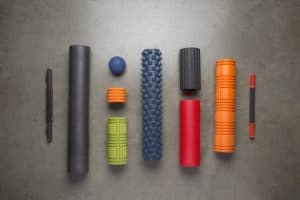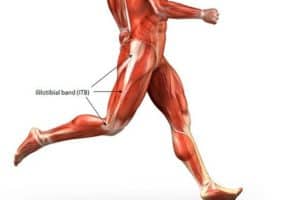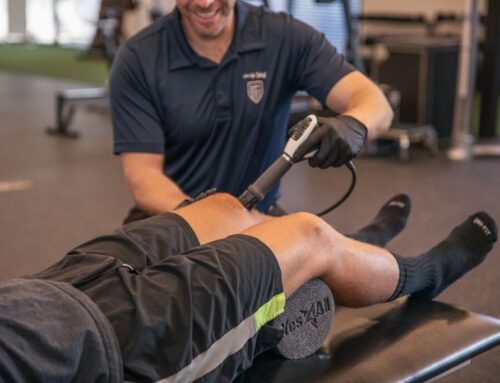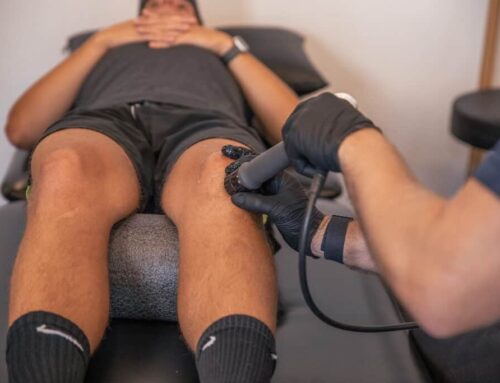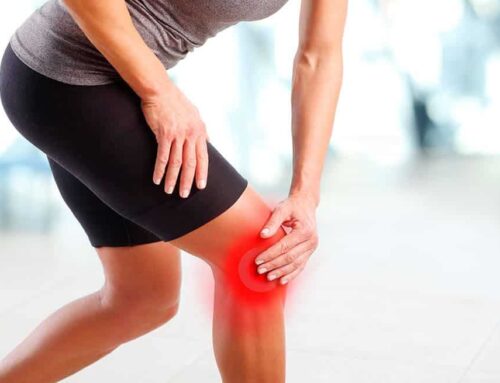You’ve heard it from your neighbor, your cousin, your friend: “Your knee hurts? Foam roll your IT band! Hurts like hell, but it’ll feel better after!”
That person isn’t wrong – it definitely does feel better after! But that effect is typically short-lived, and you find yourself foam rolling the same area over and over with no lasting impact on your knee pain. Foam rolling is a great way to reduce muscle tension and improve range of motion at the knee, but there are optimal ways and areas to do it to get the best results.
Read on to learn answers to these questions:
- What exactly is the IT band?
- Why is foam rolling beneficial?
- When should I foam roll by IT band?
- What’s the best way to foam roll for optimal mobility and recovery?
What exactly is the IT band?
The IT band, or iliotibial band, is made up of something called fascia. Fascia is a thin material that covers and connects various tissues throughout the body, including muscles. The fascia of the IT band connects the tendons of two hip muscles, the tensor fascia latae (TFL) and gluteus maximus to the side of the knee.The IT band functions to stabilize the outside of the knee and assist the above muscles in moving the hip.
Image from: https://news.harvard.edu/gazette/story/2015/08/understanding-the-it-band/
Why is foam rolling beneficial?
Foam rolling can be beneficial in improving flexibility, reducing muscle tension, and promoting muscular recovery. However, contrary to popular belief, it doesn’t work by breaking up scar tissue or muscle adhesions. Instead, it is thought that foam rolling positively impacts muscles by improving blood flow and making the tissue more pliable. In addition, the pressure applied by the foam roll may stimulate something within the muscle called mechanical receptors. These receptors signal the brain to reduce that muscle’s activity, decreasing our perception of muscle tightness.
When should I foam roll my IT band?
Recall that the IT band is made of fascia, not muscle. Foam rolling of muscles induces relaxation and improves motion by the mechanisms discussed previously. Foam rolling of fascia does not have the same effect. Fascia is different from muscle, in that it does not contract. Because it doesn’t contract, you can’t make it relax by foam rolling.
So the answer to the question – ‘When should I foam roll my IT band?’ is this: likely very rarely, or never. (There is the occasional person who has no discomfort with it and swears by this – more power to them!) However, for the majority of people, focusing your foam rolling efforts elsewhere is going to reap greater and longer-lasting benefits.
What’s the best way to foam roll for optimal mobility and recovery?
Instead of gritting your teeth while rolling directly on the IT band, roll on the muscles that attach to it. It’s a win-win – less pain, more results. Since the TFL and gluteus maximus insert into the IT band, decreasing tension there may subsequently reduce feelings of tightness in the IT band.
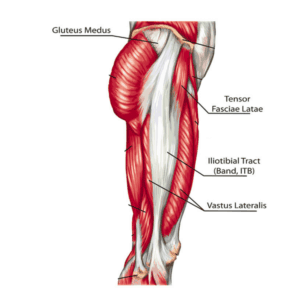
When rolling on these muscles, slow your roll! Oftentimes we find that people are rolling gently and continuously up and down the leg for a few seconds. In our experience, this type of rolling is less effective. Instead, slow down the speed and find some points of increased tension or tenderness. Hold that position for 20-30 seconds to allow that discomfort to dissipate before moving to a new spot. You can also utilize a more active approach, by moving the leg while applying pressure to it.
If this isn’t quite doing the trick, you may want to try loosening up your calves, which can also impact your knee! In addition, we also highly recommend a strengthening program to reduce your risk of knee pain.
Give these a try for a few weeks, and if your knee continues to aggravate you, we’re here to help! Give us a call at 480-482-0651 to get scheduled and on your way back to healthy running today!
Blog image: https://www.rei.com/learn/expert-advice/foam-rollers.html


